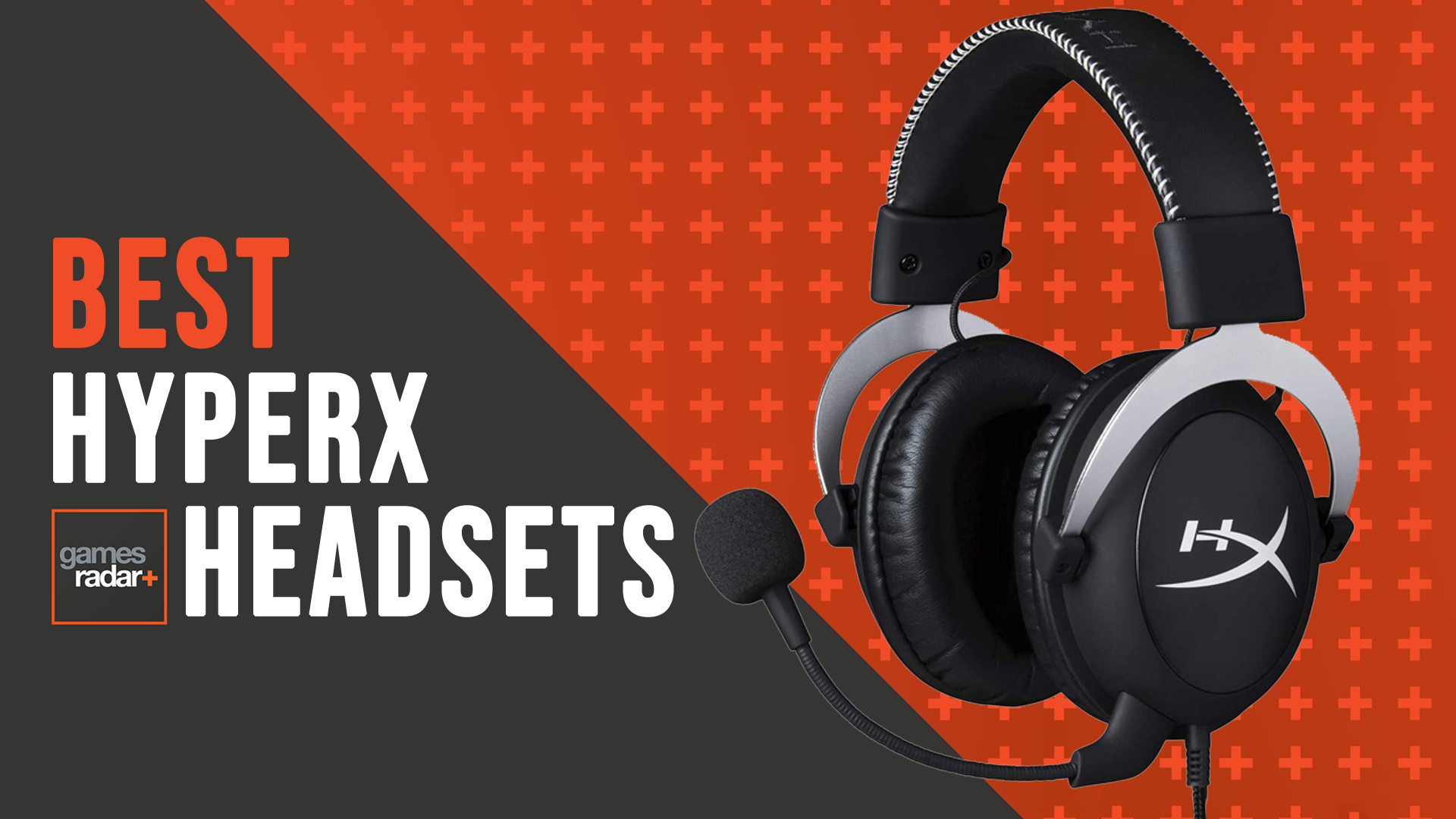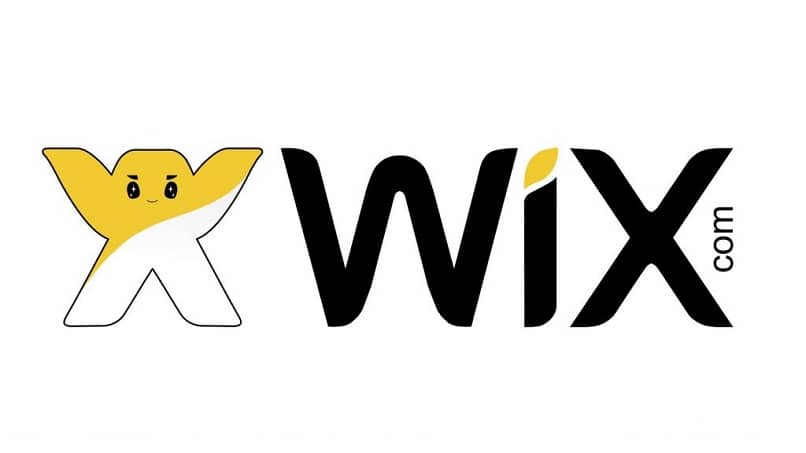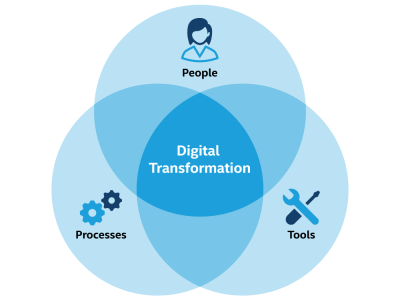
“Unlock the power of digital transformation with our curated selection of top digital transformation tools for your business. Embrace these tools as long-term investments to gain a competitive edge, enhance sustainability, and reap the benefits they offer. Don’t see them as expenses, but rather as strategic assets that propel your business forward and keep you ahead of the competition.”
Digital transformation assessment tools are resources or methodologies used to evaluate an organization’s current digital capabilities, readiness, and potential for transformation. These tools assess various aspects such as technology infrastructure, digital strategy, organizational culture, and customer experience to provide insights and recommendations for a successful digital transformation tools’ journey.
Why do you need Digital Transformation Tools & Technologies?
1. Streamlines resource management.
Digital transformation tools streamline information and resources, minimizing redundancy from multiple vendors. They establish a centralized repository for applications, databases, and platforms, facilitating enhanced collaboration and communication among teams.
2. Encourages a digital culture
Digital transformation fosters a digital-centric culture by equipping teams and individuals with appropriate tools for their tasks. It enables employees to utilize digital platforms for upskilling, actively contributing to business expansion, and delivering value to the organization.
3. Reduces time to market.
In many industries, time-to-market has become a crucial factor in driving value for companies, with technology serving as the foundation for core processes. Digital transformation tools and technologies have played a significant role in speeding up product life cycles and significantly lowering entry barriers in various sectors.
Leading transformational change requires top-notch digital transformation tools, not second-rate ones.
If you’re currently engaged in a digital transformation endeavor, you’re likely experiencing the challenges and complexities that come with it. Whether you’re creating a digital transformation roadmap for your company or providing consulting services to clients, you’re likely involved in various areas such as change management, project management, and human-centered design.
Choosing the right tools to support your digital transformation strategy is crucial, leaving little room for error. To assist you in this process, we have compiled a list of battle-tested, no-code and low-code applications that can help you tackle tasks ranging from sprint planning and data warehouse redesign to launching impactful change communications campaigns. These tools can contribute to the success of your digital transformation journey.
What are the Top Digital Transformation tools?
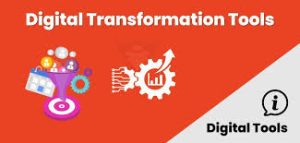
The top digital transformation tools can vary depending on specific needs and industries. However, here are some widely recognized and popular digital transformation tools:
- Customer Relationship Management (CRM) Systems: Tools like Salesforce, HubSpot, and Microsoft Dynamics 365 help manage customer interactions, sales processes, and marketing campaigns.
- Enterprise Resource Planning (ERP) Systems: Examples include SAP, Oracle, and Microsoft Dynamics 365, which integrate various business functions like finance, HR, supply chain, and manufacturing into a unified system.
- Collaboration and Communication Platforms: Tools like Microsoft Teams, Slack, and Google Workspace facilitate real-time collaboration, document sharing, and communication among teams.
- Robotic Process Automation (RPA) Software: Automation tools such as UiPath, Automation Anywhere, and Blue Prism automate repetitive tasks and streamline workflows.
- Cloud Computing Platforms: Amazon Web Services (AWS), Microsoft Azure, and Google Cloud Platform provide scalable and flexible infrastructure for hosting applications, storing data, and enabling digital innovation.
- Analytics and Business Intelligence (BI) Tools: Tools like Tableau, Power BI, and Qlik provide data visualization, advanced analytics, and reporting capabilities to derive insights and make data-driven decisions.
- Low-Code/No-Code Development Platforms: Platforms such as OutSystems, Mendix, and Microsoft Power Apps enable rapid application development with minimal coding, empowering citizen developers.
- Internet of Things (IoT) Platforms: IoT platforms like AWS IoT, Microsoft Azure IoT, and IBM Watson IoT enable connectivity, data collection, and management of IoT devices and applications.
- Artificial Intelligence (AI) and Machine Learning (ML) Tools: Frameworks like TensorFlow, scikit-learn, and Microsoft Azure ML provide capabilities for developing and deploying AI/ML models.
- Project Management and Agile Tools: Tools like Jira, Trello, and Asana help manage projects, tasks, and agile methodologies for efficient project execution.
1. CRM Systems: Digital Transformation Tools
Some CRM tools examples include Salesforce, HubSpot CRM, Microsoft Dynamics 365, Zoho CRM, and Pipedrive.
1. Salesforce
Salesforce CRM tools are widely recognized and used to manage customer relationships and sales processes. With features like contact management, opportunity tracking, and sales forecasting, Salesforce empowers organizations to streamline their sales operations, enhance customer interactions, and gain valuable insights through reporting and analytics. It provides a comprehensive platform for businesses to optimize their sales efforts and drive growth.
2. HubSpot
HubSpot offers a suite of tools designed to support inbound marketing and sales. It includes features for managing leads, creating marketing campaigns, and automating customer interactions. HubSpot’s tools encompass CRM, email marketing, social media management, content creation, and analytics. With an emphasis on attracting, engaging, and delighting customers, HubSpot enables businesses to nurture relationships, generate leads, and drive growth through a comprehensive marketing and sales platform.
Microsoft Dynamics 365 CRM tools provide a comprehensive solution for managing customer relationships and optimizing sales processes. With features such as contact management, opportunity tracking, and sales analytics, Dynamics 365 enables organizations to enhance customer engagement and drive revenue growth. Its integration with other Microsoft products and services offers a seamless experience, empowering businesses to streamline their operations and make data-driven decisions.
2. ERP Systems: Digital Transformation Tools
ERP tools examples include SAP, Oracle, and Microsoft Dynamics 365
1. SAP
SAP offers a range of ERP tools that help businesses integrate and manage their core processes. SAP ERP solutions provide modules for finance, procurement, sales, inventory, and more, enabling efficient resource planning and optimization. With features like real-time data access, reporting, and analytics, SAP tools enhance operational efficiency, streamline workflows, and support informed decision-making for organizations of all sizes.
2. Oracle
Oracle ERP tools provide a comprehensive suite of applications designed to manage and optimize core business processes. With modules for finance, supply chain, human resources, and more, Oracle ERP enables organizations to streamline operations, improve productivity, and gain real-time insights. Its robust features include financial management, procurement, inventory control, and analytics, making Oracle ERP a powerful tool for end-to-end enterprise resource planning.
3. Microsoft Dynamics 365
Microsoft Dynamics 365 ERP tools offer a unified platform for managing and integrating various business functions. With modules for finance, supply chain, manufacturing, and more, Dynamics 365 enables organizations to streamline operations and enhance productivity. Its features include financial management, inventory control, procurement, and analytics. With seamless integration with other Microsoft products, Dynamics 365 provides a flexible and scalable solution for end-to-end enterprise resource planning.
3. Collaboration and Communication Platforms
These digital transformation tools, like Microsoft Teams, Slack, and Google Workspace, facilitate real-time collaboration, document sharing, and communication among teams.
1. Microsoft Teams
Microsoft Teams is a tool that enables real-time collaboration, messaging, and video conferencing within organizations. It allows teams to chat, share files, and co-author documents in a centralized workspace. With features like channels, meetings, and integrations with other Microsoft applications, Teams empowers seamless collaboration, enhances communication, and increases productivity among team members.
2. Slack
Slack is a transformational tool that revolutionizes communication and collaboration within teams and organizations. With its intuitive interface, channels, and direct messaging, Slack enables real-time messaging, file sharing, and integration with various apps and services. It centralizes communication, reduces email clutter, and fosters efficient teamwork, ultimately enhancing productivity, and knowledge sharing, and driving digital transformation across the organization.
Google Workspace offers a suite of productivity tools that foster collaboration and communication within organizations. It includes applications like Gmail, Google Drive, Docs, Sheets, and Meet. With features for real-time document editing, file storage, email management, and video conferencing, Google Workspace enhances teamwork, simplifies workflow, and promotes seamless collaboration, enabling organizations to work efficiently and effectively in a cloud-based environment.
4. Robotic Process Automation (RPA) Software:
These digital transformation tools, such as UiPath, Automation Anywhere, and Blue Prism, automate repetitive tasks and streamline workflows.
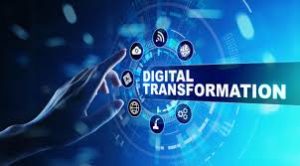
1. UiPath
UiPath is a leading robotic process automation (RPA) tool that enables organizations to automate repetitive and rule-based tasks. With its user-friendly interface and drag-and-drop functionality, UiPath allows users to create, test, and deploy automation workflows. It integrates with various systems and applications, enabling seamless data exchange and process automation. UiPath empowers businesses to improve efficiency, reduce errors, and enhance productivity through intelligent automation capabilities.
Automation Anywhere is a popular robotic process automation (RPA) tool that enables organizations to automate manual and repetitive tasks. With its user-friendly interface and drag-and-drop functionality, Automation Anywhere allows users to create and deploy bots for automating business processes. It supports integration with various applications and systems, providing a comprehensive automation solution. Automation Anywhere helps businesses increase productivity, accuracy, and efficiency by streamlining workflows and reducing manual intervention.
Blue Prism is an industry-leading robotic process automation (RPA) tool that helps organizations automate business processes. With its visual and code-free interface, Blue Prism enables the creation and deployment of software robots that can mimic human actions. It offers a wide range of features, including process recording, exception handling, and centralized management. Blue Prism empowers businesses to improve efficiency, reduce costs, and achieve greater operational agility through intelligent automation.
5. Cloud Computing Platforms:
These digital transformation tools, like Amazon Web Services (AWS), Microsoft Azure, and Google Cloud Platform, provide scalable and flexible infrastructure for hosting applications, storing data, and enabling digital innovation.
1. Amazon Web Services (AWS)
Amazon Web Services (AWS) is a comprehensive cloud computing platform that provides a wide range of services for businesses. It offers scalable and flexible infrastructure solutions, including computing power, storage, and databases. AWS also includes services for artificial intelligence, machine learning, and IoT. With its global presence and robust security measures, AWS enables organizations to leverage the power of the cloud to innovate, deploy applications, and drive digital transformation.
Microsoft Azure is a powerful cloud computing platform that offers a wide array of services for building, deploying, and managing applications and services. It provides scalable virtual machines, storage options, and databases, along with services for artificial intelligence, machine learning, and analytics. Azure also includes tools for DevOps, IoT, and data integration. With its global reach and enterprise-grade security, Azure empowers organizations to accelerate innovation and drive digital transformation in a reliable and secure cloud environment.
The Google Cloud Platform (GCP) is a comprehensive cloud computing platform that offers a range of services for building, deploying, and managing applications and infrastructure. It provides scalable computing power, storage, databases, and machine learning services. GCP also includes tools for analytics, data processing, and IoT. With its global network and advanced security features, GCP enables organizations to leverage the power of the cloud to drive innovation and achieve their digital transformation goals.
6. Analytics and Business Intelligence (BI) Tools:
These digital transformation tools, like Tableau, Power BI, and Qlik, provide data visualization, advanced analytics, and reporting capabilities to derive insights and make data-driven decisions.
1. Tableau Tool
Tableau is a powerful data visualization and business intelligence tool that allows organizations to analyze and present data in a visually compelling way. It offers a wide range of interactive dashboards, charts, and reports, making it easier to understand complex data and uncover insights. Tableau supports seamless data integration from multiple sources and enables collaboration for data-driven decision-making, helping businesses derive actionable insights and drive data-driven strategies.
Tableau tool tip: Use calculated fields to perform custom calculations and transformations on your data, unlocking advanced analysis and visualization capabilities.
Power BI digital transformation tools is a robust business intelligence tool by Microsoft that enables organizations to visualize and analyze data from various sources through interactive dashboards, reports, and data visualizations. With its intuitive interface and powerful data modeling capabilities, Power BI empowers users to gain valuable insights, share reports, and collaborate across teams, fostering data-driven decision-making and accelerating business growth.
- Power BI Tips:
- Use Power Query to clean and transform your data before loading it into Power BI for analysis.
- Utilize DAX (Data Analysis Expressions) formulas to create calculated columns and measures for advanced calculations.
3. Qlik
Qlik is a powerful data analytics and visualization tool that enables organizations to transform raw data into valuable insights. With its associative data model, Qlik allows users to explore data dynamically, making it easier to uncover hidden relationships and patterns. Qlik’s intuitive interface, interactive dashboards, and advanced analytics capabilities empower users to make data-driven decisions, driving business growth and innovation.
- Qlik vs Tableau
Qlik and Tableau are both powerful data visualization and analytics tools, but they differ in their approach. Qlik has an associative data model, while Tableau focuses on visual analytics. The choice depends on specific requirements and preferences.
7. Low-Code/No-Code Development Platforms
These digital transformation tools such as OutSystems, Mendix, and Microsoft Power Apps enable rapid application development with minimal coding, empowering citizen developers.
1. low code Outsystems
OutSystems is a leading low-code development platform that allows organizations to build applications with minimal coding effort. It provides a visual interface, pre-built templates, and drag-and-drop functionality to simplify the development process. OutSystems offers features like rapid prototyping, easy integration with existing systems, and built-in security. With OutSystems, businesses can accelerate application development, reduce time-to-market, and empower citizen developers to create robust applications without extensive coding knowledge.
What is Mendix is a low-code application development platform that enables organizations to build and deploy custom enterprise applications with greater speed and agility. It offers an intuitive visual interface, reusable components, and pre-built templates to simplify the development process. Mendix supports collaboration, seamless integration with existing systems, and scalability. With Mendix, businesses can accelerate application delivery, foster innovation, and adapt quickly to changing business needs.
Microsoft Power Apps is a low-code application development platform that allows organizations to build custom business applications quickly and easily. With a visual interface and pre-built templates, Power Apps empowers users to create apps without extensive coding knowledge. It integrates seamlessly with other Microsoft tools and services, offers data connectivity options, and supports mobile app development. Power Apps enables organizations to streamline processes, enhance productivity, and drive digital transformation.
- The Microsoft Power Apps Plan 2 trial
Allows users to experience the advanced features and capabilities of Power Apps Plan 2. and allows individuals and organizations to explore and evaluate the full potential of Power Apps Plan 2 before making a purchasing decision.
8. Internet of Things (IoT) Platforms:
These digital transformation tools like AWS IoT, Microsoft Azure IoT, and IBM Watson IoT enable connectivity, data collection, and management of IoT devices and applications.
1. AWS IoT
AWS IoT is a comprehensive platform by Amazon Web Services that facilitates the management and connectivity of IoT (Internet of Things) devices. It offers a scalable infrastructure for securely connecting, managing, and collecting data from IoT devices. AWS IoT provides features like device provisioning, message routing, and data analytics, enabling organizations to build and deploy IoT applications and solutions with ease while ensuring reliable and secure communication between devices and the cloud.
- AWA IoT Greengrass – AWA IoT remote ssh
2. Microsoft Azure IoT
Microsoft Azure IoT is a perfect platform for building and managing IoT solutions. It offers a range of services and tools for connecting, monitoring, and controlling IoT devices. Azure IoT provides features for device provisioning, data ingestion, analysis, and visualization. It also includes capabilities for edge computing and machine learning. With Azure IoT, organizations can build robust and scalable IoT solutions, enabling them to leverage the power of the Internet of Things for their business needs.
IBM Watson IoT is a platform that combines IoT capabilities with AI-powered analytics from IBM Watson. It offers features for device connectivity, data management, and real-time analytics. Watson IoT enables organizations to securely connect and manage IoT devices, collect and analyze data, and gain actionable insights. It also supports predictive maintenance, asset tracking, and remote monitoring, empowering businesses to enhance operational efficiency and drive innovation in the IoT space.
9. Artificial Intelligence (AI) and Machine Learning (ML) Tools:
These digital transformation tools or frameworks, like TensorFlow, sci-kit-learn, and Microsoft Azure ML provide capabilities for developing and deploying AI/ML models.

1. TensorFlow
TensorFlow is an open-source machine learning framework developed by Google. It provides a comprehensive ecosystem for building and deploying machine-learning models. TensorFlow offers a wide range of tools and libraries for tasks such as deep learning, neural networks, and numerical computation. With its flexible architecture, TensorFlow enables efficient and scalable development of machine learning applications across various platforms and devices.
sci-kit-learn, also known as sklearn, is a popular open-source ML framework in Python. It provides a wide range of algorithms and tools for tasks like classification, regression, clustering, and dimensionality reduction. scikit-learn offers a consistent API, making it easy to experiment with different models and perform tasks such as data preprocessing, model evaluation, and feature selection. It is widely used for machine learning research and practical applications.
Microsoft Azure Machine Learning is a comprehensive framework and cloud-based service for building, training, and deploying machine learning models. It provides a wide range of tools and capabilities, including automated machine learning, deep learning, and model deployment. Azure ML integrates seamlessly with other Azure services, enabling data scientists and developers to leverage the power of the cloud for scalable and efficient machine learning workflows and production deployments.
10. Project Management and Agile Tools:
These digital transformation tools like Jira, Trello, and Asana help manage projects, tasks, and agile methodologies for efficient project execution.
1. Jira Tool
Jira is a widely used project management and issue-tracking tool developed by Atlassian. It allows teams to plan, track, and manage their work using agile methodologies. Jira provides features for creating and organizing tasks, assigning work to team members, tracking progress, and generating reports. It supports collaboration, workflow automation, and integration with other tools, making it a popular choice for software development and project management across various industries.
2. Trello
Trello is a popular project management tool that utilizes a flexible and visual approach to task management. It organizes work into boards, lists, and cards, allowing teams to track progress and collaborate on projects. Trello offers features such as assigning tasks, setting due dates, adding attachments, and creating checklists. With its intuitive interface and customizable workflows, Trello helps teams streamline their work, improve productivity, and stay organized.
Asana is a powerful project management and collaboration tool that helps teams organize and track their work. It offers features such as task management, project planning, file sharing, and team communication. Asana provides a visual interface with customizable boards, lists, and timelines, allowing teams to prioritize tasks, set deadlines, and monitor progress. With its user-friendly design and robust functionality, Asana enables teams to streamline workflows and improve productivity.
10 Top Digital Transformation Tools List: CRM ERP RPA BI AWS
See More:
- Best Financial Digital Transformation Services: Trend | Future
- What is the Digital Transformation in Local Government: Benefits| Challenges
- Digital Transformation in Business: Trend| Future| Benefits
- Digital Transformation in Government and Public Sector: Challenges| Benefits| Trends
- 10 Top Digital Transformation Tools List
- Human-Centered Digital Transformation: Tech Secrets Gen5


